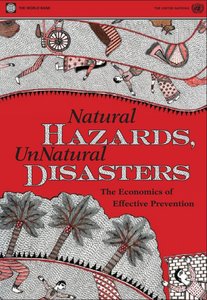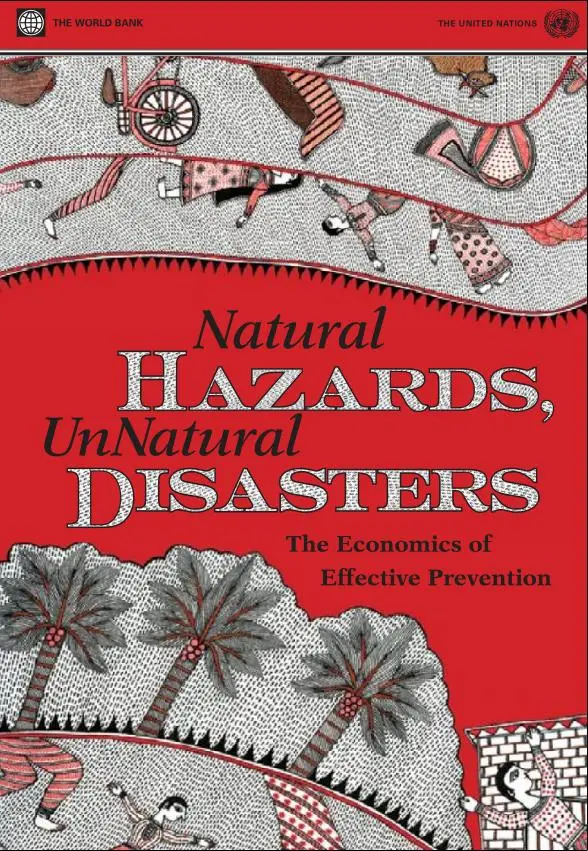Natural Hazards, UnNatural Disasters:
The Economics of Effective Prevention
Publisher: World Bank Publications | 2010 | ISBN-10: 0821380508 | ISBN-13: 978 0821380505 | English | PDF | 276 pages | 54.0+52.29 Mb
The Economics of Effective Prevention
Publisher: World Bank Publications | 2010 | ISBN-10: 0821380508 | ISBN-13: 978 0821380505 | English | PDF | 276 pages | 54.0+52.29 Mb
Earthquakes, droughts, floods, and storms are natural hazards, but unnatural disasters are the deaths and damages that result from human acts of omission and commission. Every disaster is unique, but each exposes actions by individuals and governments at different levels that, had they been different, would have resulted in fewer deaths and less damage. Prevention is possible, and this book examines what it takes to do this cost-effectively. It looks at disasters primarily through an economic lens. Economists emphasize self-interest to explain how people choose the amount of prevention, insurance, and coping. But lenses can distort as well as sharpen images, so the book also draws from other disciplines: psychology to examine how people may misperceive risks, political science to understand voting patterns, and nutrition science to see how stunting in children after a disaster impairs cognitive abilities and productivity as adults much later. Peering into the future, it shows that while urbanization and climate change will increase exposure to hazards, vulnerability can be reduced if cities are better managed. This book will be of interest to government officials, urban planners, relief agencies, NGOs, donors, and other development practitioners.
"A remarkable combination of case studies, data on many scales, and application of economic principles…. [this report] provides a deep understanding of the relative roles of the market, government intervention, and social institutions in determining and improving both the prevention and the response to hazardous occurrences."
Kenneth J. Arrow, Nobel Prize in Economics, 1972
"I strongly recommend this book to non-economists as well as economists, and to government officials who must cope with floods, oil spills, earthquakes, and other disasters."
Gary S. Becker, Nobel Prize in Economics, 1992
"Fascinating and right on target…. You are doing very important work."
Elinor Ostrom, Nobel Prize in Economics, 2009
"This report is a gem….a model to be studied and emulated….a team effort, contradicting the popular notion that a camel is a horse described by a committee. I don t remember reading any other 248 pages on a deadly serious subject that were so informative and so easily digested."
Thomas C. Schelling, Nobel Prize in Economics, 2005
"An excellent piece of work with really practical lessons that will influence the way disasters are handled and indeed prevented…. [it] could make a gigantic difference to the lives of vulnerable people. I welcome it warmly."
Amartya Sen, Nobel Prize in Economics, 1998
"Careful, thoughtful, studious… responses will be more effective, before and after the event, and damage will be less if governments, relief organizations, and others learn from this study."
Robert M. Solow, Nobel Prize in Economics, 1987
Review
"A remarkable combination of case studies, data on many scales, and application of economic principles. provides a deep understanding of the relative roles of the market, government intervention, and social institutions in determining and improving both the prevention and the response to hazardous occurrences." –Kenneth J. Arrow, Nobel Prize in Economics, 1972
"I strongly recommend this book to non-economists as well as economists, and to government officials who must cope with floods, oil spills, earthquakes, and other disasters." –Gary S. Becker, Nobel Prize in Economics, 1992
"Fascinating and right on target…. You are doing very important work." –Elinor Ostrom, Nobel Prize in Economics, 2009



